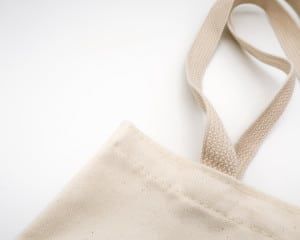Ideas To Make Your Packaging Environmentally Friendly

There has been a lot of debate in recent years about how goods and products are packaged and how this packaging is contributing to unnecessary waste and plastic in the oceans. Most forms of packaging take a lot of energy to produce as well as other chemicals, water, wood, etc to create them. The production also leads to further pollution of the atmosphere from factories that produce the packaging.
So how can your company do its part in reducing unnecessary packaging while still ensuring your products are safe and in line with your company brand.
Whether you’re a big company with complex logistics operations, or an independent seller creating handmade items, there is a lot you can do to make your product packaging better for the environment without compromising on security or brand promotions.
Use distribution partners who share your ethos
If you’re using a third-party logistics provider to store and deliver your products, then you should choose a company that reflects your own company values when it comes to sustainability.
You can’t market yourself as one thing but not see it through in other areas of your operation. Clients will soon notice and it could affect your brand.
Many logistics providers are taking great steps to reduce their impact on the environment. Some of these include powering their premises with green energy and introducing electric or hybrid vehicles into their fleets.
Before you choose your logistics partner, ask them what they currently do to reduce environmental impact and what their plans are for the future (as it can take time to implements these).
Don’t use too much packaging
Packaging is out of control these days, both in products that are delivered to our doors and available in the supermarkets.
How many times have you received a product wrapped in plastic, inside a box, inside another box, which itself is often wrapped in plastic?
Using well-fitting packing can avoid the need for extra filling and your products will be far less likely to be damaged in transit.
When choosing your packaging, think carefully about what you really need and what can be reused or recycled.
Go back to basics
Rather than trying to find new and exciting packaging products for your business, don’t discount the cardboard box. It’s durable, comes in many shapes and sizes, and can be branded to reflect your company.
Cardboard is also widely recycled and breaks down more than most other materials in a landfill. Many people also store cardboard boxes to reuse later, extra promotion for your brand.
If you choose the cardboard box route, look for branding options that use water-based inks that won’t cause any further environmental damage.
Ensure your packaging is reusable
Recyclable packaging is good, but reusable recycled packaging is better. For example, if you sell items for children, you could decorate the box so that it can be used as a doll’s house or toy box. If you sell creative items your packaging could turn into a beautiful origami structure that can be displayed on a desk.
Really think about what you could be doing with your packaging that gives it a life beyond simply protecting your product.
Use packaging that grows
There’s no downside to having more plants and trees in the world. Now you can buy packaging that has seeds in it , so when you’re finished with the packaging, the customer can plant it in their garden or in a pot and enjoy it for years to come.
This is a great idea for kids’ items too as their parents and carers can explain to them the importance of plants for the environment and they can plant them and watch them grow together.
If this seems like a bit of a stretch for your brand then look at compostable packaging too. When put in a compost bin, the heat and humidity will help break down the packaging so that it can be used as fertilizer.
Use fabrics as packaging
When we think of product packaging, we usually think of plastic and cardboard. But there’s also a place for other types too. Rather than using plastic bags, opt for reusable organic fabric bags. Not only will they be reused, giving you an extra promotional push, but if they are thrown away, they will degrade fairly quickly when compared to plastic which can take up to 10,000 years to biodegrade.
If your bags are designed well enough, they might become a product of their own that people want to buy so that they can reduce their use of plastic bags. The costs of these are relatively small, just be sure that you’re ordering organic fabric and water-based prints.
Label everything clearly
It’s all well and good using environmentally friendly packaging, or packaging that grows plants etc, but if your customer isn’t aware of this, then it may just be a waste of time. After all, it is the end customer who will have to throw away (or reuse) your materials. If they aren’t aware of how they can be recycled, they may just throw them into the wrong rubbish collection bin.
By doing this, you’re reinforcing your green credentials to customers and making them feel better about using your products too.
Make it a selling point
As long as your being truthful and authentic, there’s nothing wrong with wearing your green credentials on your sleeve. Tell your potential customers how much you value the environment and what you’re doing to make sure you’re not unnecessarily adding to environmental problems.
Go digital
How many elements of your products and their packaging really need to be there? Many companies include things like receipts, packing notes, thank you cards, and money-off vouchers with their parcels.
Rather than have these separately printed, look to make these a digital delivery. After all, the customer has probably ordered online, so you already have a way to contact them via email or SMS. Send them a copy of the invoice digitally rather than put a copy in with the product. The same goes with the thank you card. Arrange for a beautifully designed email or video to be delivered to their email after they’ve received their package.
Doing this will reduce costs too as you won’t be paying to have items professionally printed.
Encourage returns of product packaging
Many people prefer to refill containers rather than buy a new one each time. It’s something that’s catching on supermarkets and in the toiletries and make-up sectors too. If you make perfume, toiletries, or other products in specialized bottles or containers, introduce a scheme whereby a customer can get money off their next purchase if they return the empty items.
The benefits of this are numerous. Not only does it strengthen your green credentials, but you’ll save money on buying packaging items. Because you’re giving a discount, the customer will be more likely to make a repeat purchase from you, feeling like they’re doing their small part to help the environment.
Final thoughts
Consumers demand more from brands in today’s economy. As many people look to reduce their own use of unnecessary products and packaging, they expect brands to do the same. Research has shown that Millenials and Gen Z are far more concerned about the social impact of their actions and brand loyalty won’t factor into their decisions, they will look elsewhere.
Less packaging doesn’t mean boring. There are many ways to make your brand stand out with new packaging techniques, you just have to get a little creative.


